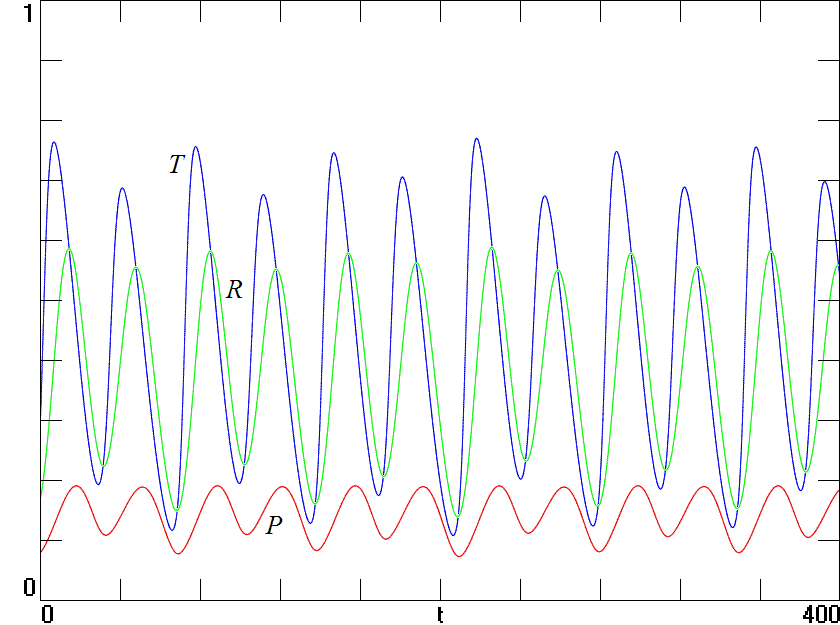
Fig. 1. Population density of people (P), rays (R), and trees (T) as a function of time at a fixed position around the ring. Time is in units of years.
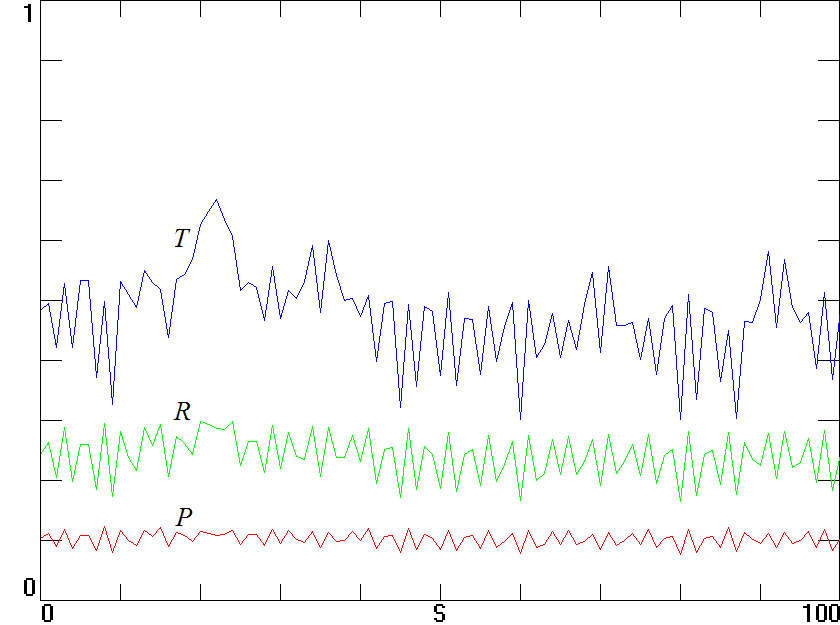
Fig. 2. Population density of people (P), rats (R), and trees (T) as a function of position around the ring at a fixed time.
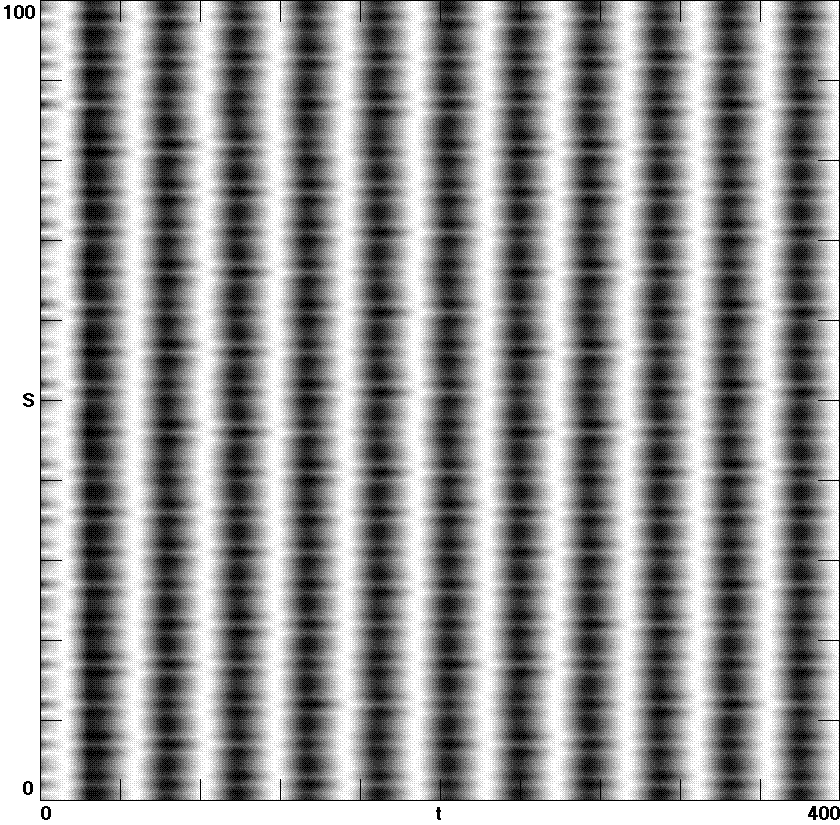
Fig. 3. Population density of people as a function of position around the ring (s) and time (t). Time is in units of years, and the lighter regions correspond to greater population.
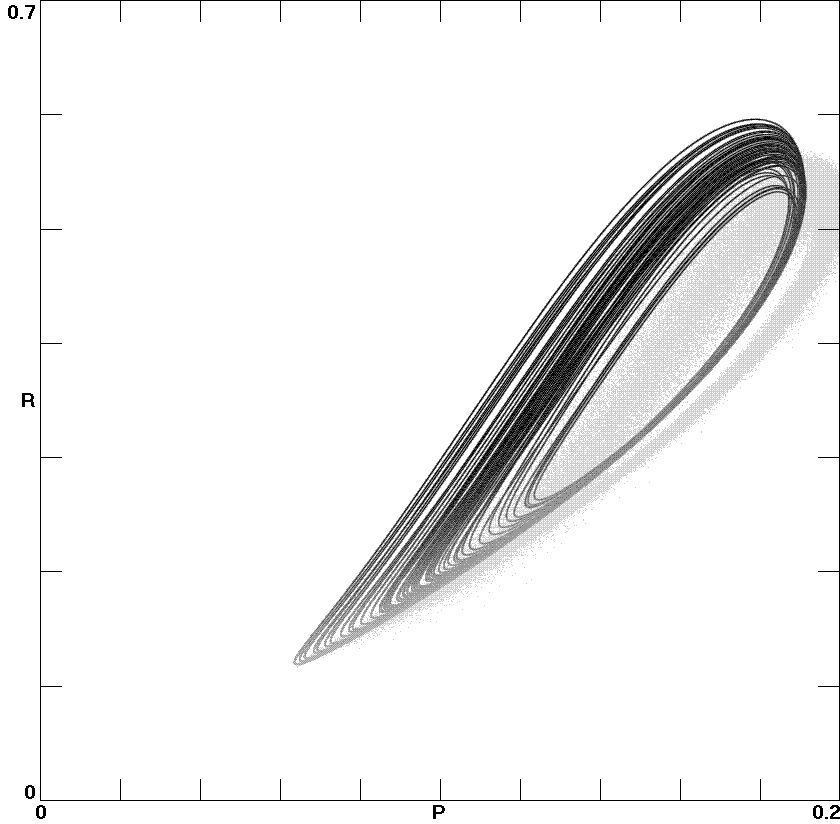
Fig. 4. A projection of the strange attractor at a typical place around the ring, showing the population density of rats (R) versus the population density of people (P) with the population density of trees indicated by a shadow.
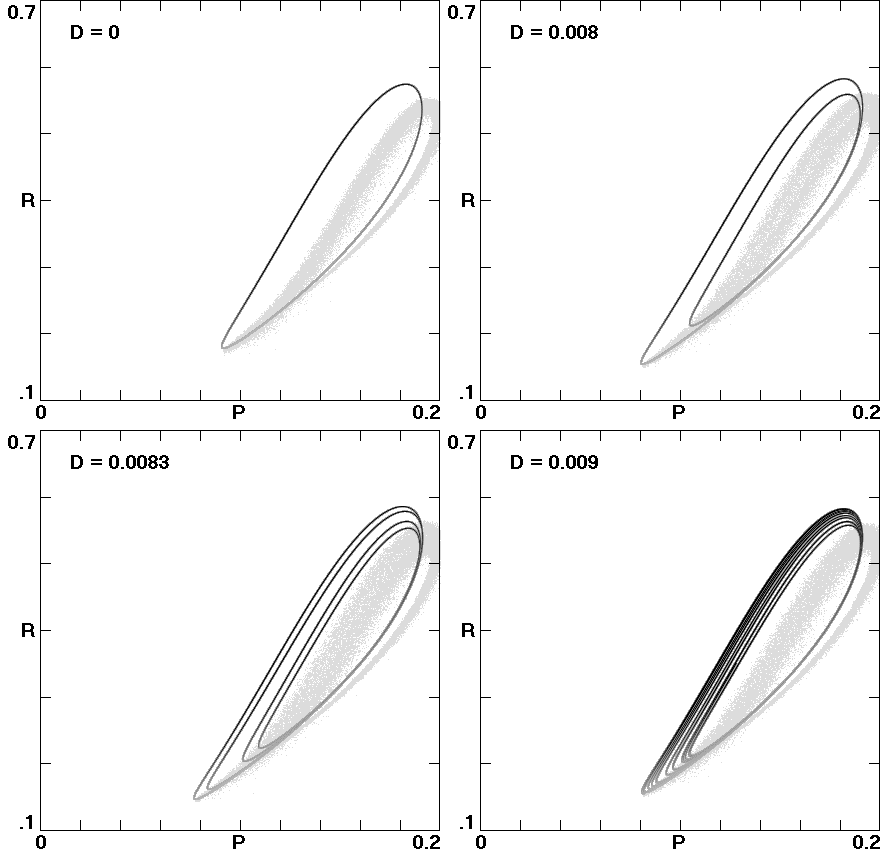
Fig. 5. Attractors showing a progression from a simple limit cycle at D = 0 to a period-2 limit cycle at D = 0.008 to a period-4 limit cycle at D = 0.0083 to chaos at D = 0.009.